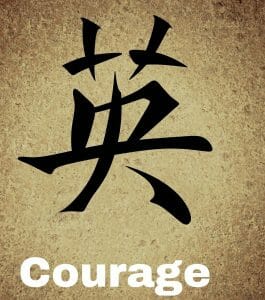In Northern Ireland, there’s a rope bridge that goes from the mainland near the Giant’s Causeway to the tiny island of Carrickarede. When I visited there I was excited to cross the bridge to “get to the other side”. All I knew about it when I decided to go is what I’ve told you so far. It sounded like a fun adventure.
 Now, I don’t have a fear of heights so I sometimes forget that others do. It startled me how few people on our tour had any interest in crossing on the bridge. My husband had no interest, though he was glad to take pictures of me walking across. Ann, traveling with us, had no interest in even getting close. And my new friend, Svetla from Bulgaria (we met at the Giant’s Causeway) fell between Randy and Ann in her interest in seeing the rope bridge.
Now, I don’t have a fear of heights so I sometimes forget that others do. It startled me how few people on our tour had any interest in crossing on the bridge. My husband had no interest, though he was glad to take pictures of me walking across. Ann, traveling with us, had no interest in even getting close. And my new friend, Svetla from Bulgaria (we met at the Giant’s Causeway) fell between Randy and Ann in her interest in seeing the rope bridge.
What I learned after I walked it was that it’s 66 feet (20 meters) long and 98 feet (30 meters) above the rocks and sea. To me, it didn’t seem that long or that high. I suspect for others it seemed longer and higher. The challenge in walking across such a bridge is getting your step in sync with the undulation of the bridge caused by the others walking across.
Nobody I walked across with seemed to struggle with the bridge. But, maybe some of the people watching from either side were paralyzed with fear. Sometimes being paralyzed isn’t obvious to an outsider. That can be the way of paralyzing fear.
The reactions of my husband and Svetla intrigued me. They both watched as I crossed each way. My husband later commented that if he’d realized what the bridge was like he would have joined me. Svetla said it wasn’t too bad to watch, but she wouldn’t have crossed for anything.
Three people. Three reactions.
Another story of paralyzing fear comes from an incident I witnessed decades ago. A woman I worked with was deathly afraid of spiders. We worked in a high-security building with double-lock entries and exits. As she was leaving one night she went through the first of the locked doors with a coworker and found herself five feet from a spider hanging from the ceiling. She collapsed against the door unable to speak or move, staring at the spider. Security guys had to come in through the second door to help her out, killing and removing the spider first. The other person had walked through without even noticing the spider.
Three people. Three reactions.
What would your reaction have been in either story? Oblivious? Paralyzed? Something in between?
What I’ve learned from my studies and experiences is that you have to face your fear, pull it into the light and examine it carefully. Fear has great power and will control you until you face it and put it into proper perspective.
Taking action through your fear is important. Also, take a few deep breaths, stimulating your vagus nerve to activate the “rest-and-digest” aspects of the parasympathetic nervous system. That relaxes you and loosens the grip of fear locking you into inaction.
Taking Action
Here are some steps to help you release your fears.
- Acknowledge your fears with the intention of recognizing what it is that makes you afraid.
- Stop overthinking because too much thinking prevents you from actually doing anything. Instead, take the worst-case scenario and dissect it by asking “what if?”
- Find your strengths and bolster them, live into them.
- Eat well, and move and exercise daily.
- Set goals to give you direction, and to force you above your fears so you can achieve the things you want in your life.
- Breathe deeply, focusing on your breath.
- Focus on the process so you can appreciate the journey.
- Celebrate your wins, big and small, to boost your confidence and motivation.
- Take action.
- Repeat as needed.
Fear is a product of your mind, making it an internal struggle, not a reality of the outside world. When you choose to remain paralyzed you choose to rob yourself of life’s experiences and stay closed to the universe. More often than not, your paralyzing fear isn’t the result of any real or tangible danger, but of your internal fears causing you mental and emotional pain and stress.
You can choose to end that and live without such fear (just like you see others do every day!). When you feel paralyzed by fear, you find it’s hard to think clearly, to move, and seem incapable of dealing with your fear. You don’t make good decisions when you are paralyzed by fear. That works against you. Step away from that fear and the resulting reality.
Change the way you talk to yourself about your fear. Whatever you think, you start to believe. That belief  reinforces your likelihood to think the same way in the future. If you want to have good outcomes, you need to turn your thoughts to the positive. Think of best-case scenarios and outcomes and work through how you can get there.
reinforces your likelihood to think the same way in the future. If you want to have good outcomes, you need to turn your thoughts to the positive. Think of best-case scenarios and outcomes and work through how you can get there.
Take one step at a time to reach the result you are seeking. You don’t want a fear of heights? Start with mental steps to work through the situation. You don’t want to be afraid of spiders? Develop a plan on how you can calmly respond to the spiders you are bound to encounter. Then step at a time, overcome that fear through action.

Nicely written Kit thank you. Very timely
Thanks, Rebecca. Glad you liked the article. The timing was pure serendipity. I like that. 🙂
I know that bridge in Ireland. We didn’t have time to cross it because of our schedule. If we had, my crossing would have been with jumping kneecaps and a faster beating heart, but I would have done it. The person I was traveling with, wouldn’t have given it a second thought….would have crossed it like walking on a sidewalk! Yes, we have different perspectives. Enjoyed your message.
How much fun, Karen, that you know that bridge! And brava that you would have done it, even with trembling knees. You would have felt more empowered when you got back to the mainland. Different perspectives make the world go round.
Glad you enjoyed the article and message.
Great article, the timing could not have been better.
Thanks, Jay.
I gotta say the serendipity of the timing intrigued me too.
I would have crossed the bridge, but not as blithely as some. I like new experiences and I would have enjoyed the ‘win’ afterward for sure. You write beautifully of the whole experience and the thought process. Thank you.
That’s courage you have there, Deborah. Taking on new experiences speaks of courage, of overcoming your fears and discomforts. Well done.
Thank you for your kind words.